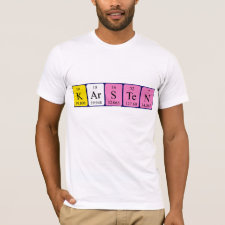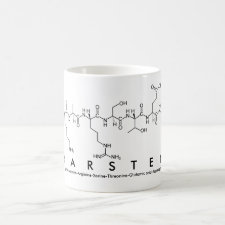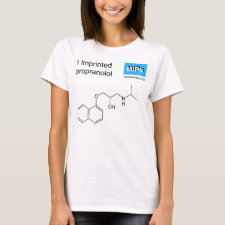
Authors: Schmidt RH, Belmont AS, Haupt K
Article Title: Porogen formulations for obtaining molecularly imprinted polymers with optimized binding properties.
Publication date: 2005
Journal: Analytica Chimica Acta
Volume: 542
Issue: (1)
Page numbers: 118-124.
DOI: 10.1016/j.aca.2005.03.064
Alternative URL: http://www.polymerinfo.com/publications/bulk_mip_porogen.pdf
Abstract: This paper examines the formulation of new porogenic mixtures used to prepare molecularly imprinted polymers (MIPs) in both thin film and bulk monolith formats. Films were cast by using spin coating to spread a pre-polymerization mixture onto a substrate, and rapid curing of the films was achieved with UV photolysis. The use of a low volatility solvent in combination with a linear polymer porogen resulted in a porous morphology and a 60-fold enhancement in the binding capacity, relative to a non-porous film prepared with a highly volatile solvent and in the absence of the polymer porogen. The opposite effect was seen in MIPs that were prepared in the traditional bulk monolith format, for which the binding efficiency of the MIP decreased monotonically with the concentration of the linear polymer porogen. Furthermore, bulk MIPs that were prepared in the presence of linear polymer porogens exhibited significantly decreased specific surface areas (from 620 to 8 m2/g for samples prepared with pure solvent and 50% polymer porogen, respectively). Despite the change in binding capacity and morphology, the selectivity of the bulk MIPs remained unaffected by the presence of the polymer porogens (approximately 50% chiral selectivity for all bulk MIPs considered). This difference in behavior of the two systems was attributed to the large difference in the kinetics of polymerization
Template and target information: propranolol
Author keywords: Molecularly imprinted polymers, morphology, porogen



Join the Society for Molecular Imprinting

New items RSS feed
Sign-up for e-mail updates:
Choose between receiving an occasional newsletter or more frequent e-mail alerts.
Click here to go to the sign-up page.
Is your name elemental or peptidic? Enter your name and find out by clicking either of the buttons below!
Other products you may like:
 MIPdatabase
MIPdatabase









